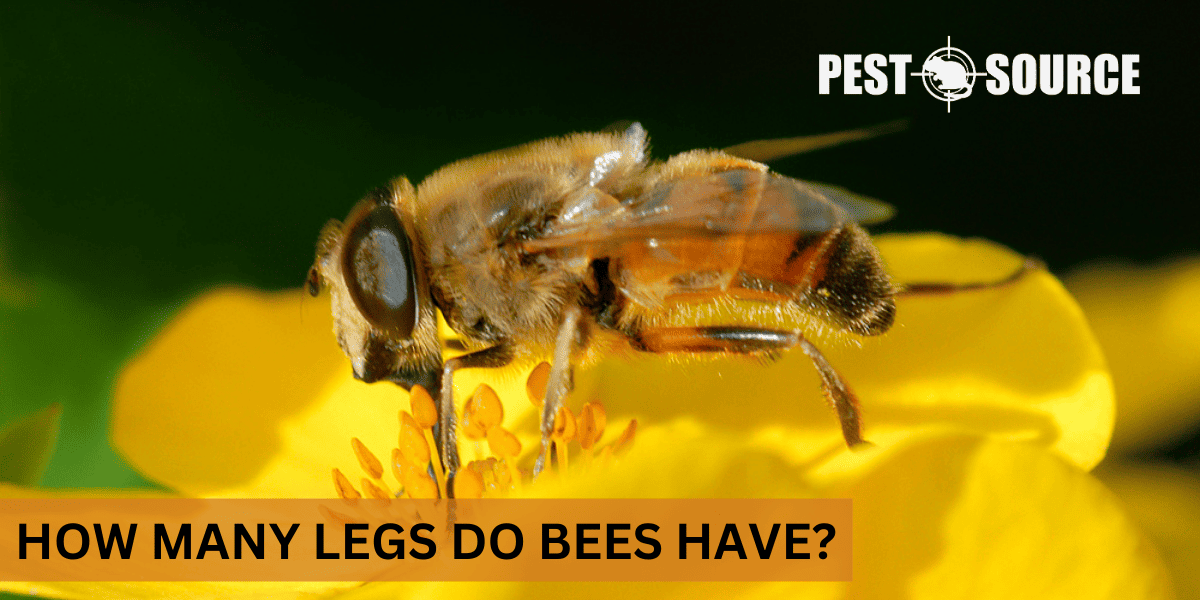Bees, like all insects, have six legs. These legs are specialized for different tasks, including walking, gripping onto surfaces, and collecting pollen. This anatomical feature is essential for their role in pollination and their ability to navigate and thrive in various environments. Discover more about how bees use their legs in fascinating ways to support their colonies and ecosystems.
POINTS
- All bees, regardless of species, have six legs which are segmented and jointed, similar to human limbs, facilitating a range of motion and strength.
- Bee legs serve multiple functions including walking, grooming, collecting pollen, and communication, with specialized structures such as pollen baskets on their hind legs.
- Bees possess an exoskeleton made of chitin that provides support and protection, and they have a proboscis for feeding which works in conjunction with their legs.
- Bee legs are equipped with sensors that help in navigation and communication, complementing their five eyes – two compound eyes and three ocelli – which aid in visual processing and flight stabilization.
- The evolutionary development of bee legs, with their specialized adaptations, is a result of millions of years of evolution, highlighting the intricate relationship between a bee’s anatomy and its environment.
How Many Legs Do Bees Have Across Different Species?
Bees, fascinating creatures that they are, play a crucial role in pollination and the health of our ecosystems. A common question that arises when observing these insects is about their physical characteristics, specifically their legs. Do bees have 6 legs? Yes, like all insects, bees have six legs. This is consistent across various bee species, such as bumblebees, honeybees, and solitary bees. Despite their different lifestyles and habitats, from the bustling hive of the honeybee to the solitary burrows of the solitary bees, the leg count remains a constant.
Anatomy and Functionality of Bee Legs
Bee legs are marvels of evolution, perfectly adapted for the tasks they perform. The anatomy of a bee’s leg is complex and multifunctional. Structurally, each leg is divided into segments connected by joints, similar to the way our arms and legs are structured. The segments include the coxa, trochanter, femur, tibia, and the tarsus, which is further divided into five segments, ending in a claw. This design allows for a wide range of motion and strength.
But, do bees have feet? In a manner of speaking, yes. The tarsus can be thought of as the foot of the bee, equipped with claws and adhesive pads that allow bees to cling to various surfaces and manipulate objects.
Bees use their legs for walking, grooming, collecting pollen and nectar, and communication. The hind legs of many bee species have specialized structures such as pollen baskets, which are used to transport pollen back to the hive. These features highlight the intricate relationship between a bee’s anatomy and its daily activities.
Comparative Anatomy and Related Features of Bee Legs
When comparing bee legs to those of other insects, one can notice both differences and similarities. All insects, including bees, have an exoskeleton, which provides support and protection. Do bees have an exoskeleton? Absolutely. This rigid outer shell is made of chitin and helps to protect the bee’s internal organs, including the muscles that control leg movement.
Another feature often discussed in relation to bees is the proboscis, their elongated mouthpart used for drinking nectar. Do bees have a proboscis? Yes, bees have a proboscis, which works in tandem with their legs when foraging for food. While the legs are responsible for landing and stability, the proboscis is used for feeding, showcasing a harmonious relationship between different anatomical features.
Sensory Functions and Evolutionary Development of Bee Legs
The legs of bees are not only remarkable for their mechanical capabilities but also for their sensory functions. Each leg is equipped with a variety of sensors that help the bee understand its environment. These sensors detect vibrations, tastes, and smells, allowing bees to communicate with each other and navigate their surroundings effectively. This sensory system is essential for tasks such as identifying flowers rich in nectar or detecting threats to the colony.
How Many Eyes Do Bees Have?
Bees have five eyes: two large compound eyes on the sides of their head and three smaller ocelli eyes on the top of their head. The compound eyes provide a wide field of vision and detect movement, while the ocelli are sensitive to light, assisting in navigation. These visual adaptations are crucial for their activities like foraging and avoiding predators.



